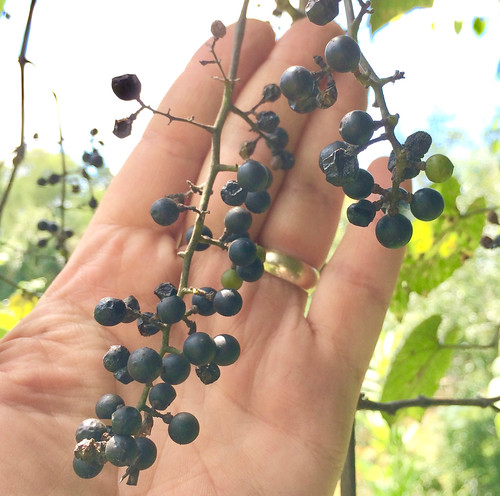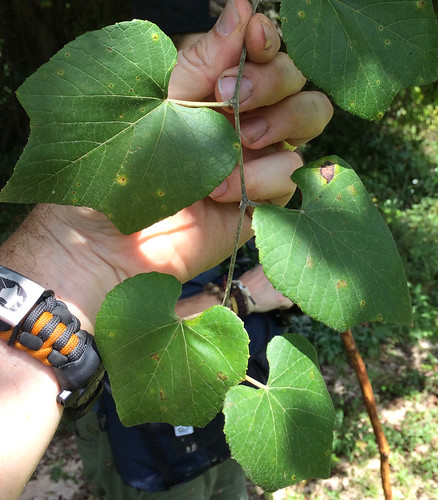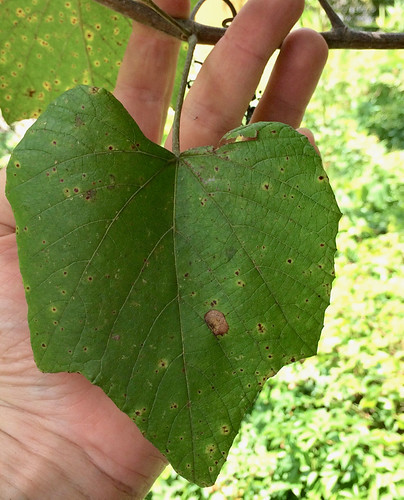Abundance: uncommon
What: fruit, leaves, young tendrils
How: fruit raw, cooked, dried, preserves, wine; leaves and tendrils cooked
Where: edges of woods, ravines, fence lines.
When: winter, fruit best after frost
Nutritional Value: calories, very low in vitamins and minerals.
Frost grapes, ripe in August & September in Houston.

Frost grape vine. Note the alternating leaf patter.

Close-up of a single leaf.

Frost grape vine with young fruit.

Texas distribution, attributed to U. S. Department of Agriculture. The marked counties are guidelines only. Plants may appear in other counties, especially if used in landscaping.

North American distribution, attributed to U. S. Department of Agriculture.

Frost Grape vines are impressive climbers, using many reddish tendrils to cling and wrap themselves around trees, bushes, and fences. Their leaves look similar to Muscadine Grape leaves, being smooth and green on top and underneath. However, Frost Grapes produce fruit much later than other Texas wild grape varieties. Its small, acidic fruit appear in clusters in early fall, well past the mid-summer season of Muscadine grapes.
Frost grapes aren't edible raw until after a frost. The cold weather triggers enzyme processes that break down the acids and build up sugars, turning them quite sweet. If harvested before then sweetening occurs you are limited to making jams, jelly, or wines from the still acidic fruit. Treat them like the highly acidic Mustang Grapes. Large, healthy Frost Grape leaves can be cooked and used like regular grape leaves.
In the fall Greenbriar vines produces tight clusters of black fruit, leading to misidentification. The Greenbriar fruit are non-toxic but they lack any flavor, being mainly just rubbery and tasteless. Remember, Greenbriar vines have thorns and they also have two tendrils at the base of every leaf. Frost Grape tendril appear on two nodes in a row and then skip one or more nodes. Frost Grape fruits grow in long, dangling clusters whereas Greenbriar fruits grow in ball-shaped clusters.
Greenbriar fruit, not Frost Grape fruit.

Buy my book! Outdoor Adventure Guides Foraging covers 70 of North America's tastiest and easy to find wild edibles shown with the same big pictures as here on the Foraging Texas website.


